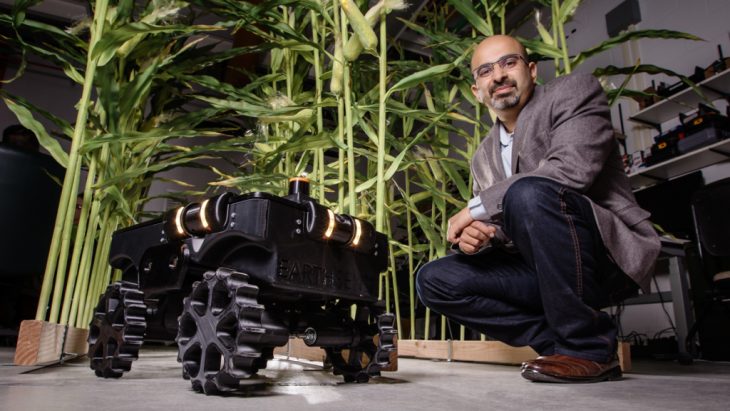Farming and robotics. They might seem like rather antithetical fields, one among the oldest vocations in the world, dating back well over 10,000 years; the other, largely an advent of the last century.
But the two share many similarities, chief among them a constant need for refinement and evolution in service of mankind. So, when a team of University of Illinois researchers set out to create a robot that would help optimize agriculture and crop management, it was a natural fit.
Described in a recent Illinois press release, the TerraSentia is a unique, semi-autonomous phenotyping robot that gently rolls between crop rows using an array of cutting-edge sensing equipment to relay information about the status and health of plants in a given acre. That info is sent in real time to the operator’s computer or mobile device.
TerraSentia is customizable and teachable, according to the researchers, who currently are developing machine-learning algorithms to “teach” the robot to detect and identify common diseases, and to measure a growing variety of traits, such as plant and corn ear height, leaf area index and biomass.
“These robots will fundamentally change the way people are collecting and utilizing data from their fields,” said U. of I. agricultural and biological engineering professor Girish Chowdhary. He is leading a team of students, engineers and postdoctoral researchers in development of the robot.
TerraSentia’s advantages over conventional phenotyping methods are numerous. The lightweight robot is easy to transport and can roll over young plants without damaging them. TerraSentia can also work efficiently for long hours, and, if grouped as a swarm, could quickly survey a large farm, eliminating the need for costly, time-consuming phenotyping by humans.
For plant breeders looking to increase crop output, drought and disease resistance, TerraSentia will be of particular utility, objectively measuring individual plants of different genotypes in tight groupings. That could help speed the agricultural breakthroughs needed to feed our growing planetary population.
TerraSentia was presented at the 2018 Energy Innovation Summit Technology Showcase held on March 14th in National Harbor, Maryland. Testing by major seed companies, US universities and other partner organizations is set to begin in the spring, and a limited public rollout will begin during the 2018 breeding season.
To learn more about TerraSentia, including how it could benefit farmers in the developing world, and check out a video of the robot in action, check out the full University of Illinois release here.
Posted in:
This tiny robot could have big implications in agriculture



